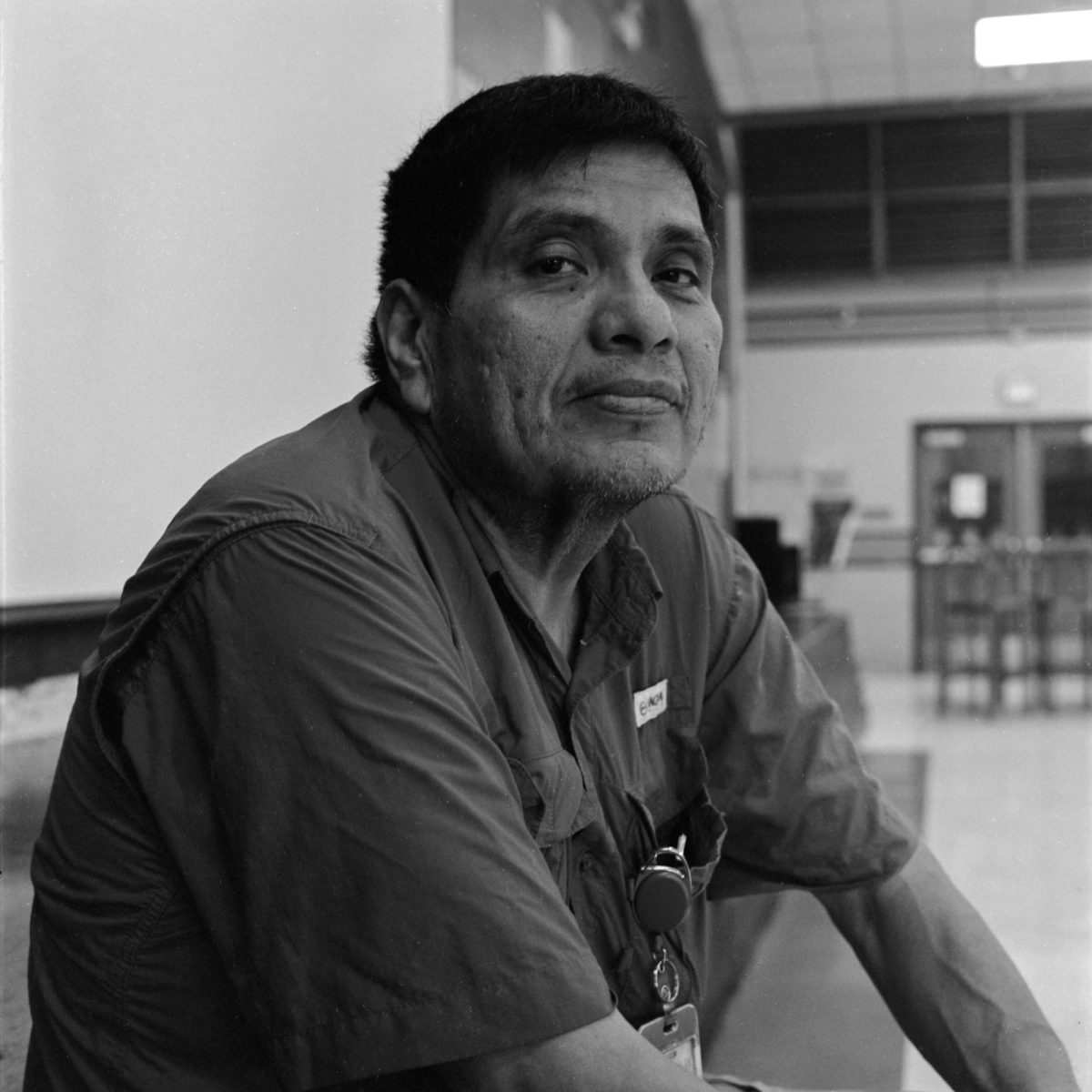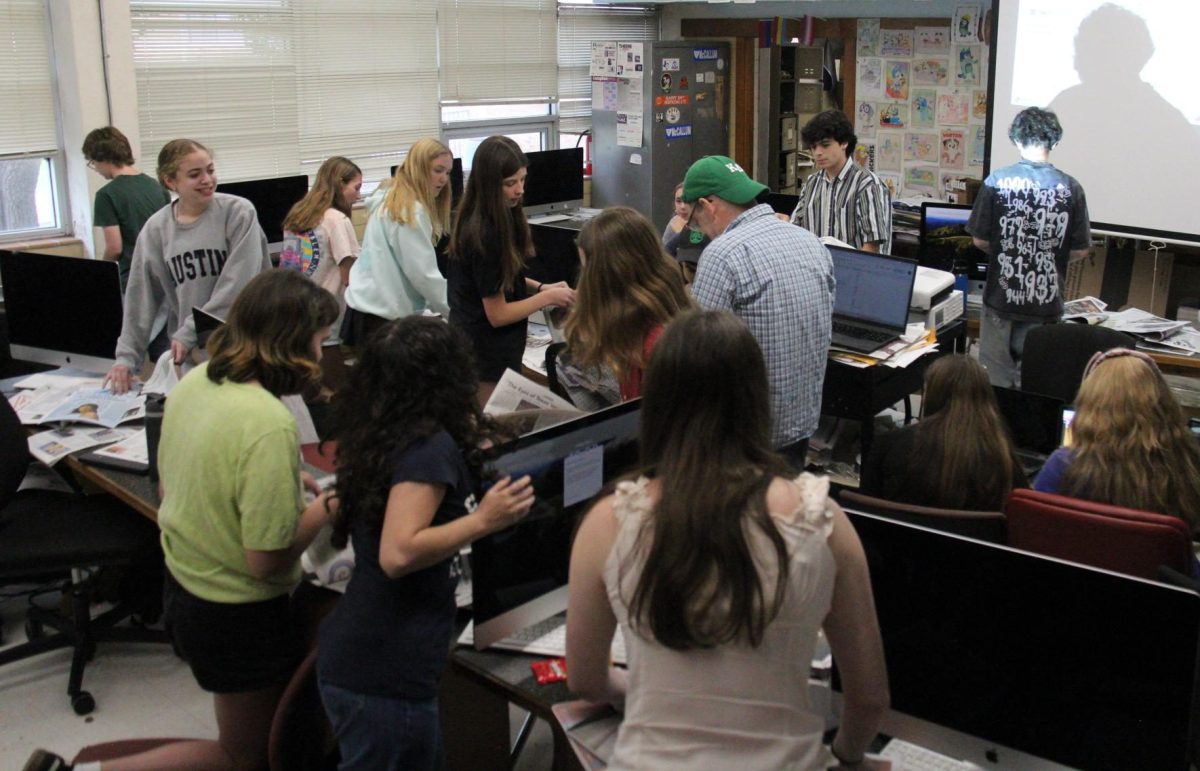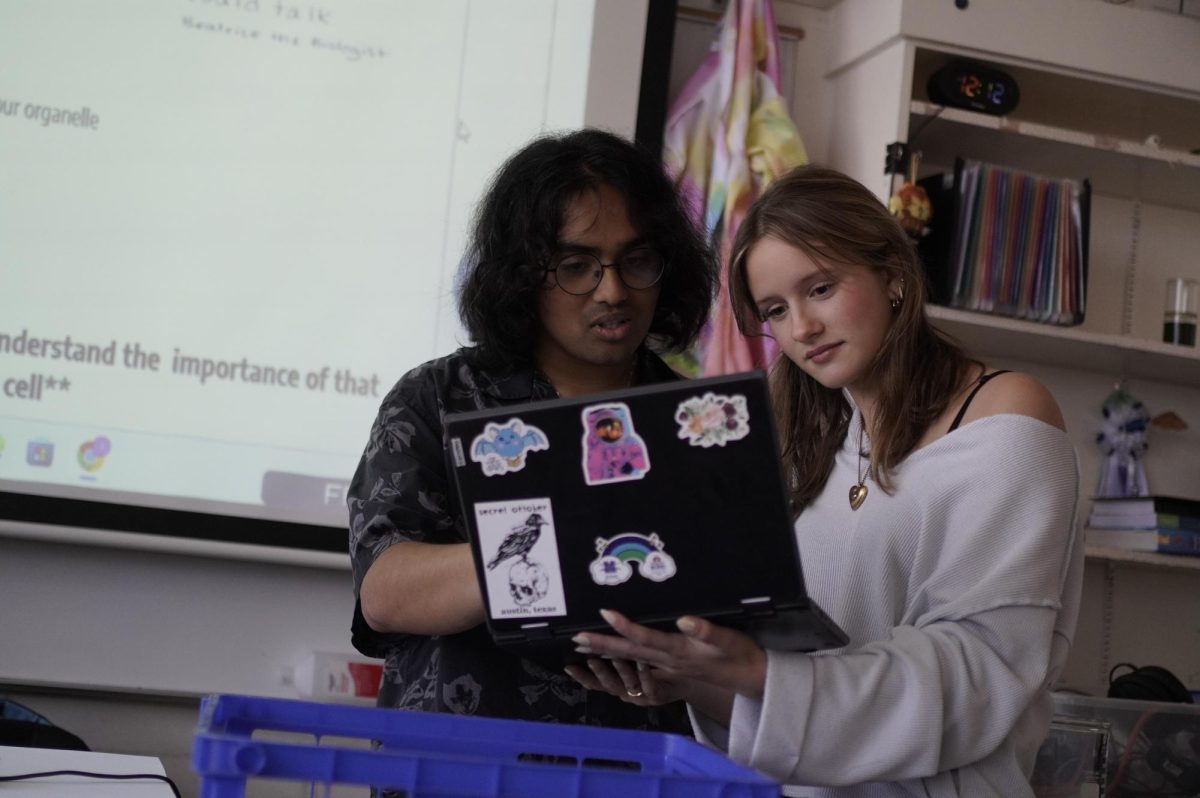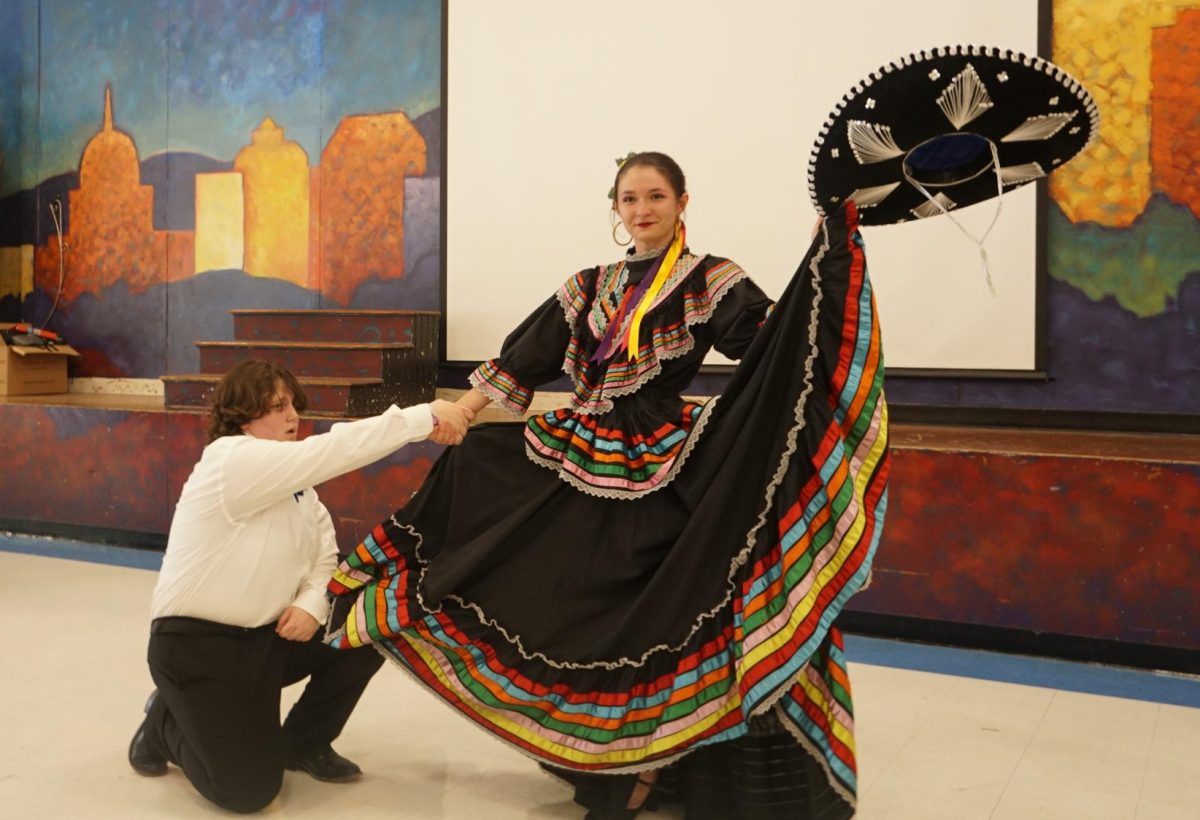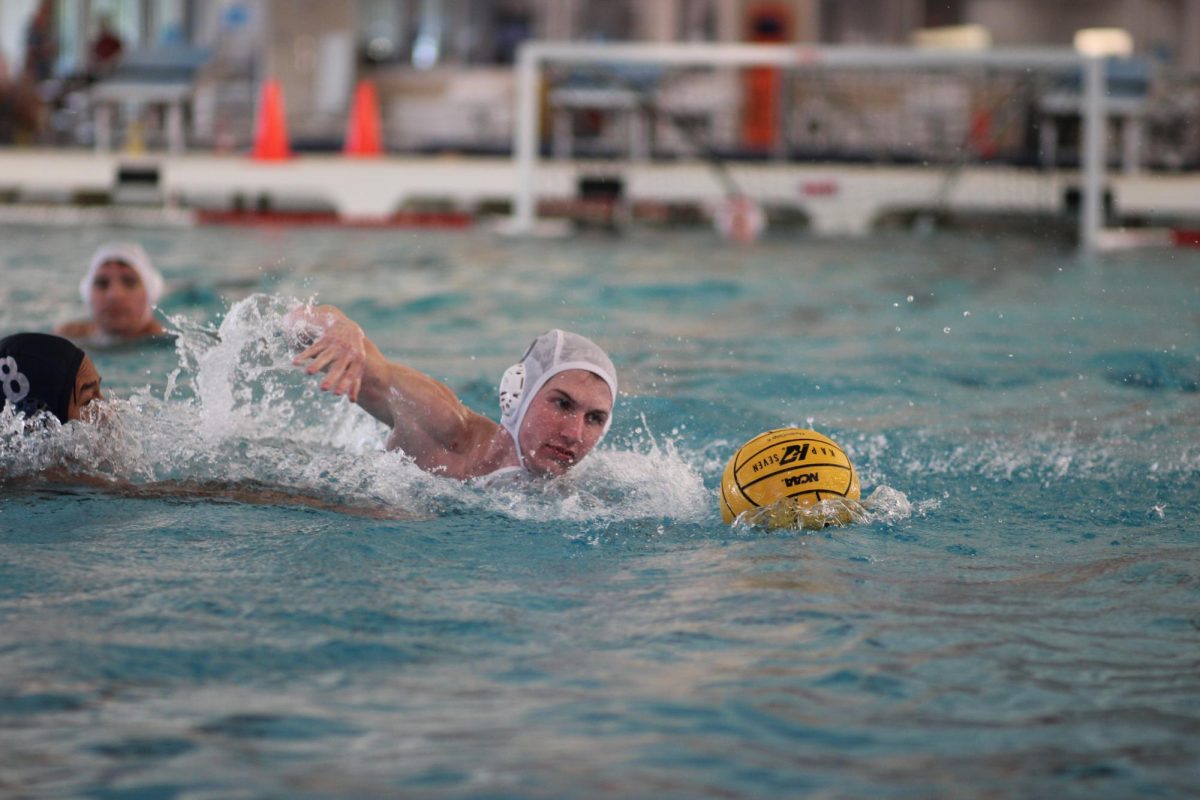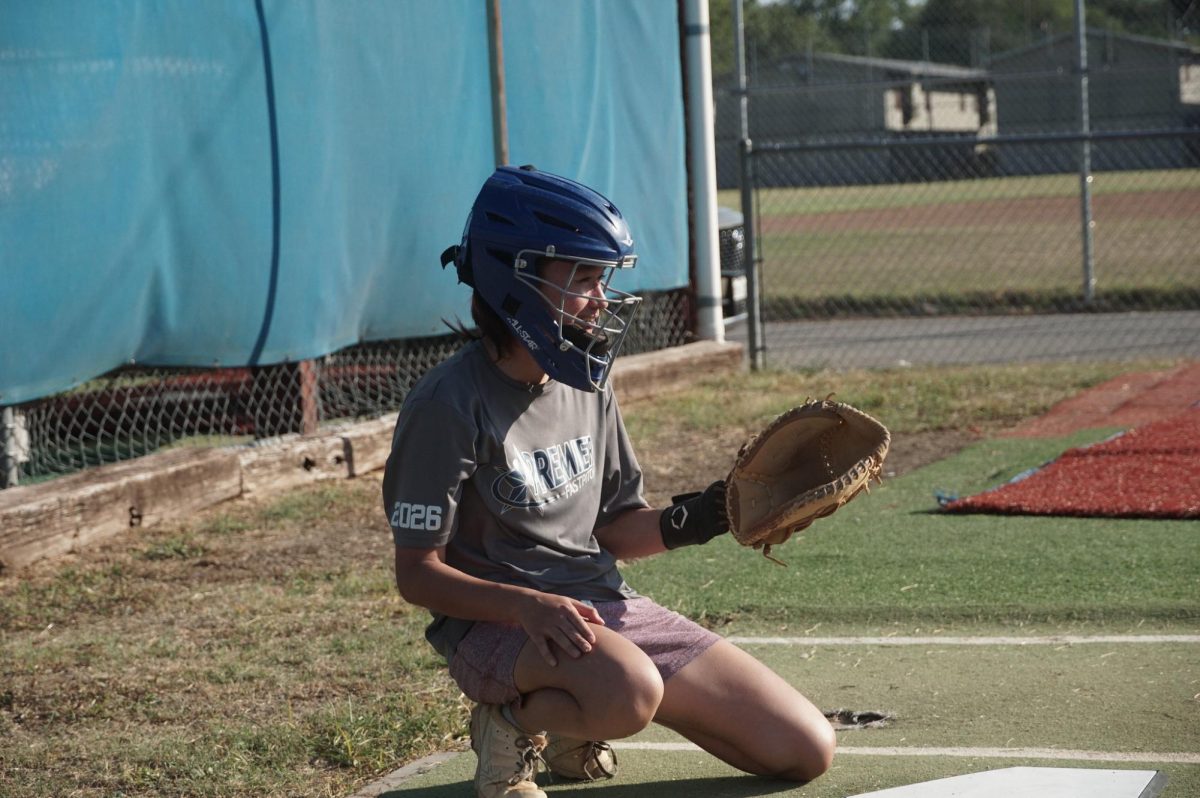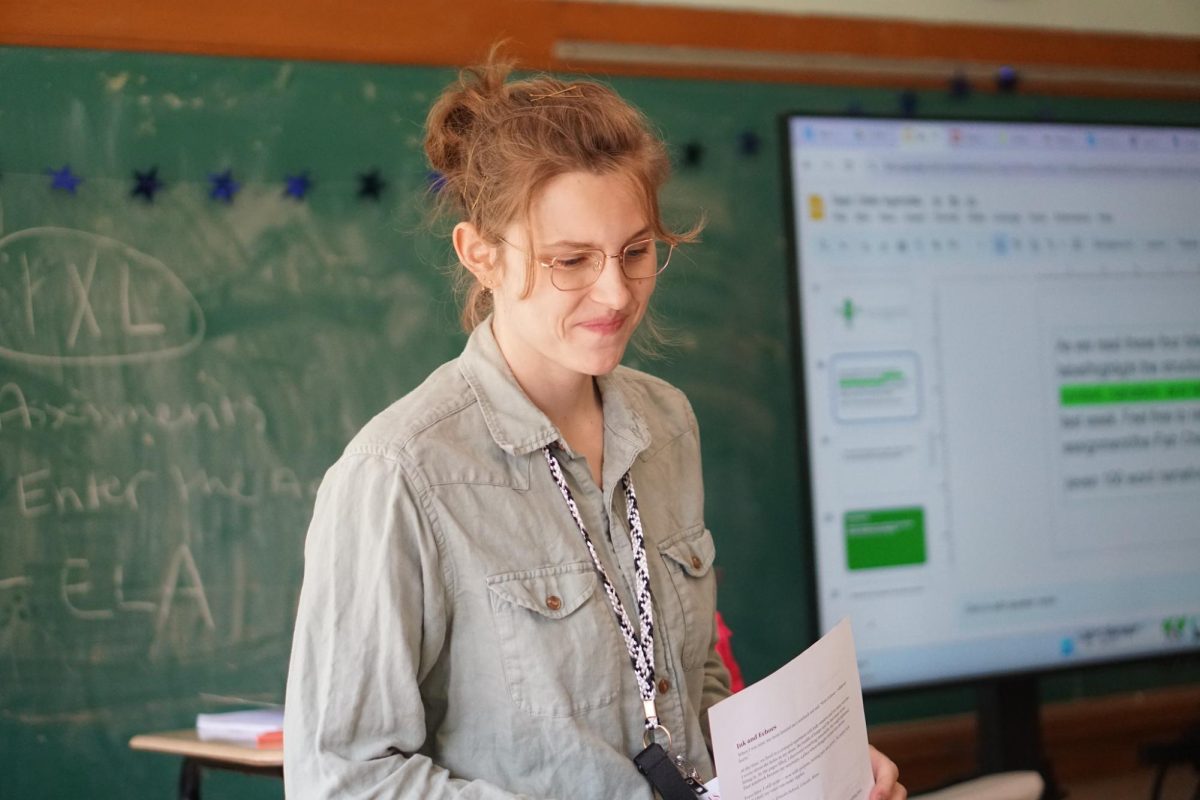LBJ Fire Academy students visited a junkyard on Feb. 11 for their fourth skill day of the year. This time, the firefighters in training focused on vehicle extrication, the process of removing the vehicle surrounding a car crash victim. Working in small groups called “engines,” the Fire Academy juniors learned the “Dash Roll,” which involves the use of power tools like the hydraulic “Jaws of Life” tool to spread apart and cut open car doors. The seniors, meanwhile, learned EMT skills like CPR that would come in handy for EMT rotations, one of the last Fire Academy graduation and certification requirements.
During the vehicle extrication skill day, students were able to bring classroom lessons to life through hands-on experimentation. With the blazing heat and heavy weight of power tools, Fire Academy students relied on teamwork and communication to push through. For some, the skill day was eye-opening, clarifying exactly what qualities firefighters need to succeed. For junior Sophie Kessler, the only McCallum student in the Fire Academy, the skill day was a memory she’ll never forget.
“It taught me literally everything I needed to know about opening up cars, and it led me to learn and troubleshoot,” Kessler said. “It was just a good learning experience.”
We are pleased to present some of the best photos from the vehicle extrication skill day as this week’s Tuesday Top 10.
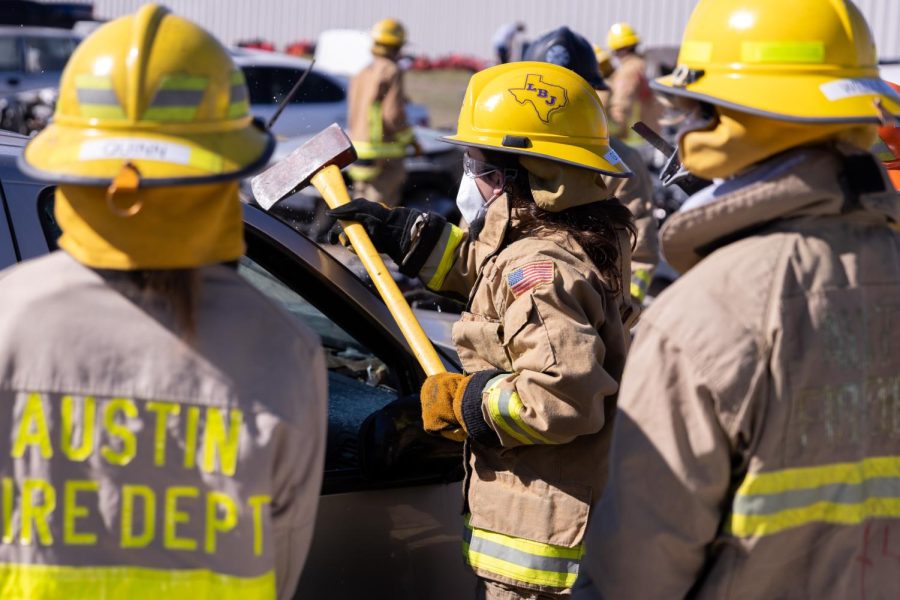
FIRED UP FOR A SKILL DAY: Fire Academy student Ramona Gonzalez practices popping a car’s windshield to demonstrate an extraction maneuver called “Dash Roll.”
“The use of this maneuver is to remove the glass to be able to access the victim and get them to safety.”
LBJ Fire Academy students are few and proud. The 22 AISD juniors enrolled in the program are challenged every few weeks by “skill days,” different simulations designed to give them hands-on experience with fire safety maneuvers and techniques.
“This helps my firefighting training because it helps me get used to the tools and practice a lot of vehicle extrication situations and knowing what to do,” Gonzalez said.
Caption by Maggie Mass. Photo by Gergő Major.
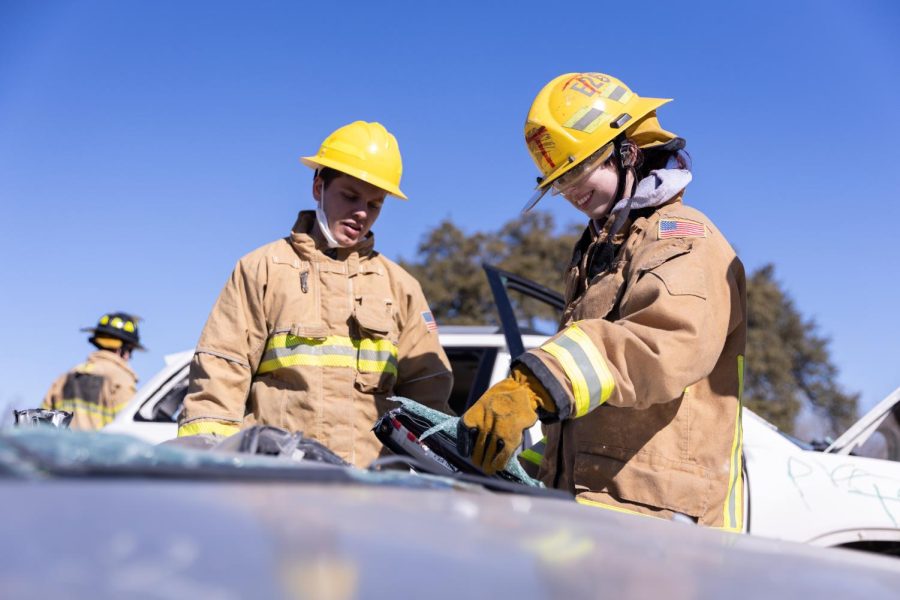
ON A DASH ROLL: McCallum junior Sophie Kessler learns how to perform a “Dash Roll,” a vehicle extrication technique, using a sawzall. The LBJ Fire Academy juniors spent nearly nine hours at a junkyard for their fourth skill day of the year. Working on broken-down cars for practice, Kessler was excited to get hands-on experience with vehicle extrication for the first time.
“We got to put our classroom studying into actual work, and it was actually the first time we were actually physically doing that,” Kessler said. “It was a good learning experience, more hands-on.”
After hours of lifting power tools and shattering windshields, the Fire Academy students took home emblems from the cars they practiced on. For Kessler, a fan of cars, this skill day was particularly fun.
“Just taking [cars] apart and looking at all the parts, and then absolutely destroying them, there’s something pretty satisfying about it,” Kessler said.
Caption by Maggie Mass and Ingrid Smith. Photo by Gergő Major.

NOT FOR THE WEAK: A Fire Academy student works to free a dummy’s feet after a simulated car crash. LASA junior Charlotte Quinn was excited to get out of the Fire Academy classroom and get physical.
“There’s only so much we can learn in the classroom with the limited resources we have at LBJ,” Quinn said. “At our skill days, we’re usually able to borrow things from Austin Fire Department which are a lot nicer and get us way more hands-on experience.”
Car extrication is a big part of a firefighter’s job, so the Fire Academy made sure students got hands-on experience with it. For Quinn, using the “Jaws of Life” tool was a highlight of the day.
“Using the ‘Jaws of Life’ was so much fun; I felt so powerful,” Quinn said. “It does require a lot more grip strength than I had initially thought, but it was incredible.”
Caption by Maggie Mass. Photo by Gergő Major.
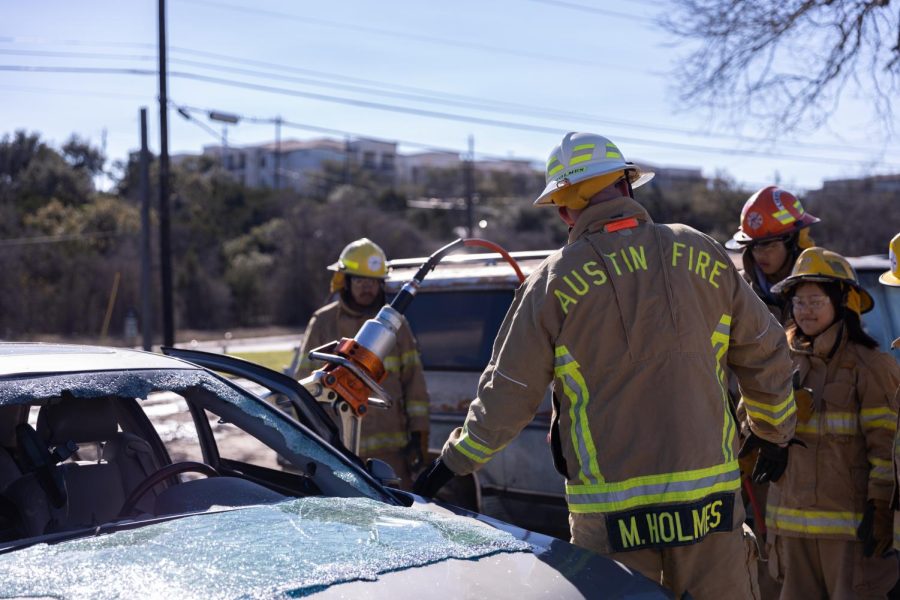
A TEST OF KNOWLEDGE: LASA junior Solomon Moon uses the “Jaws of Life” hydraulic tool to open car windows and doors after a simulated crash. For Moon, the best part of the skill day was getting to bond with other firefighters-in-training.
“My favorite thing about skill days is the real applicable lessons and skills that you learn, while at the same time working with your given engine and fellow firefighters as a whole,” Moon said.
For Moon’s group, cooperation and teamwork were key. Each firefighter-in-training brought different skills and knowledge to the table.
“Skill days are the ultimate test of your knowledge applied in a fun and educational environment,” Moon said.
Caption by Ingrid Smith. Photo by Gergő Major.
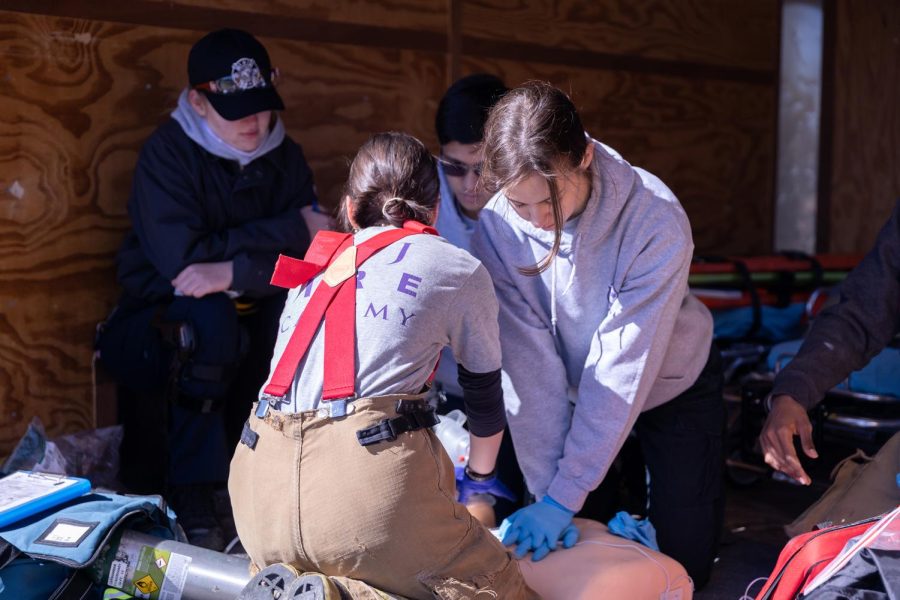
BRINGING FIREFIGHTING BACK TO LIFE: While junior Fire Academy students work with cars and extraction skills, seniors are tasked with EMT drills for their last firefighting unit. As the seniors practiced CPR on dummies, Fire Academy instructors assisted and assessed.
For LASA senior Emma Bailey, Fire Academy training has been beneficial for all aspects of life.
“The experiences that I have been able to gain from this academy are just incredible,” Bailey said.
But Bailey’s training doesn’t stop after class. Each senior Fire Academy student is required to do three 12-hour rotations on an ambulance and two eight-hour shifts in the emergency department at a hospital.
“As a senior, I have been able to train as an EMT, which has allowed me to go out into the real world and work with actual patients,” Bailey said
Caption by Maggie Mass. Photo by Gergő Major.
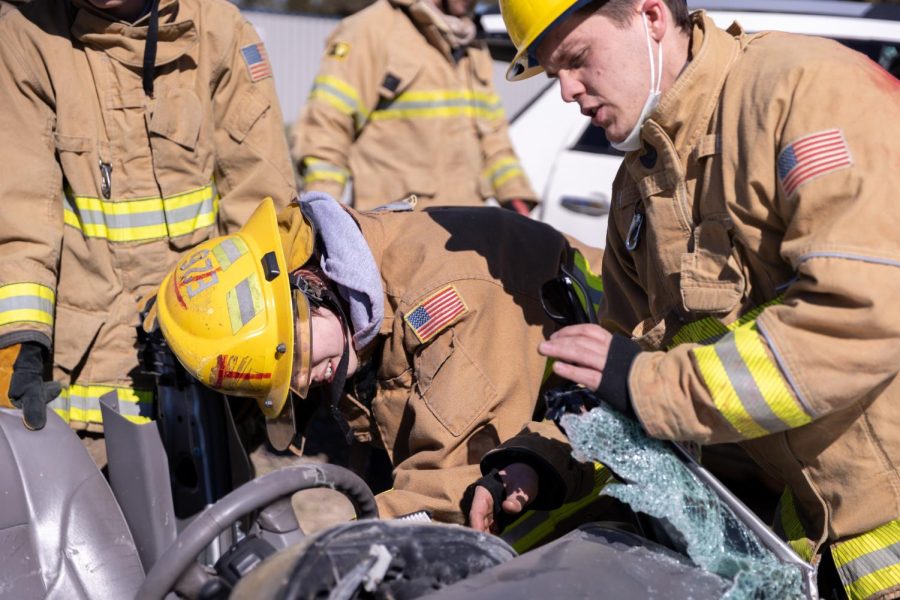
FIREFIGHTERS FEEL THE HEAT: Junior Sophie Kessler performs another car extraction while the sun beats down and reflects off exposed metal car pieces. As the skill day, which started at 7:30 a.m., progressed into the afternoon, the temperatures rose.
“Once we were like six hours in, holding tools got really hard because the ‘Jaws of Life’ are super heavy,” Kessler said. “I got calluses on my hands even though I was wearing gloves. By the end of it, I could feel my arms, and I thought they were going to fall off.”
As tough as the work was, Kessler felt accomplished at the end of the long skill day.
“Getting physical confirmation that you did it right from the actual firefighters, and they congratulate you and say you did a good job, it feels good because it’s a hard skill,” Kessler said.
Caption by Maggie Mass. Photo by Gergő Major.
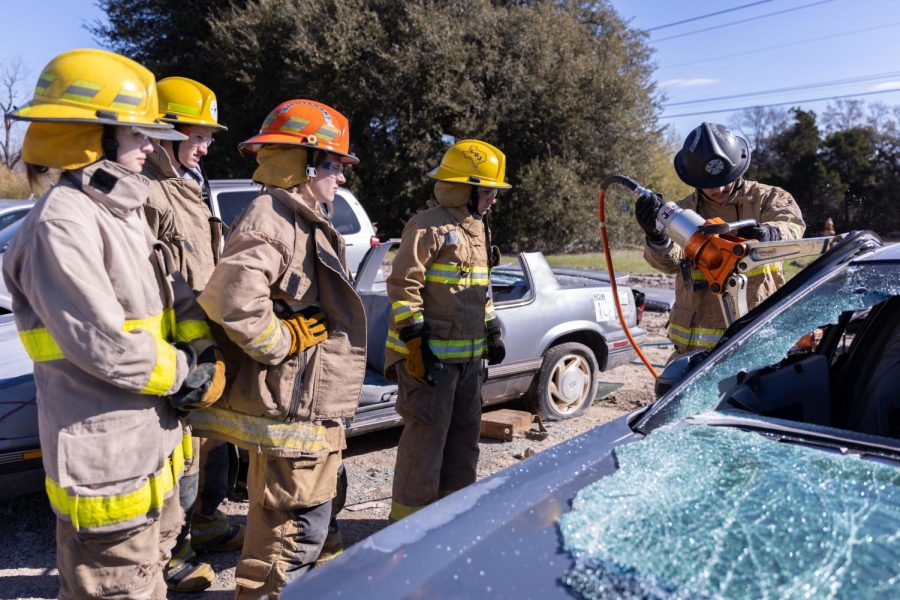
A SMASHING SUCCESS: Fire Academy students watch an instructor demonstrate the “Dash Roll.” For LASA junior Eunhyo Mah, the vehicle extrication skill day was the most physically challenging one yet.
“I think I was able to see just how much physical strength and technique and confidence firefighting require,” Mah said. “It was so physically and mentally taxing even though it was in a totally controlled environment with a lot of instructors helping.”
After lifting the “Jaws of Life” for hours on end and experimenting with power tools, Mah went home with a tennis-ball-sized bruise on her leg. But in her mind, the unique experience of simultaneously learning and smashing cars with power tools made it all worth it.
“I think skill days are really special because when else would you be able to destroy cars like that legally?” Mah said. “I think it’s really valuable to be able to try using the tools like you would in the real world because it’s so different from practicing them on things like fridges like we did in class.”
Caption by Ingrid Smith. Photo by Gergő Major.
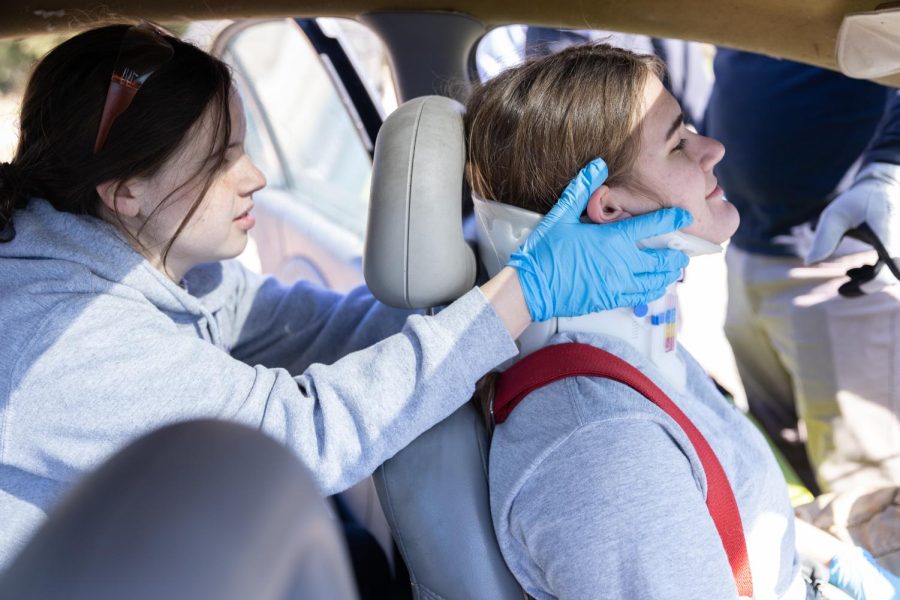
SKILLS FOR A LIFETIME: Senior students work on their EMT skills using what’s left of the juniors’ cars to practice car crash victim stabilizing.
Junior Charlotte Quinn said that firefighters must learn an abundance of difficult skills before they complete training and become certified. EMT training in particular, which the Fire Academy seniors are required to do, has many outside-of-class requirements.
“Firefighting is rough, it’s honestly brutal,” Quinn said. “There’s so much more to it than spraying water on a fire and getting to be the hero.”
Caption by Maggie Mass. Photo by Gergő Major.
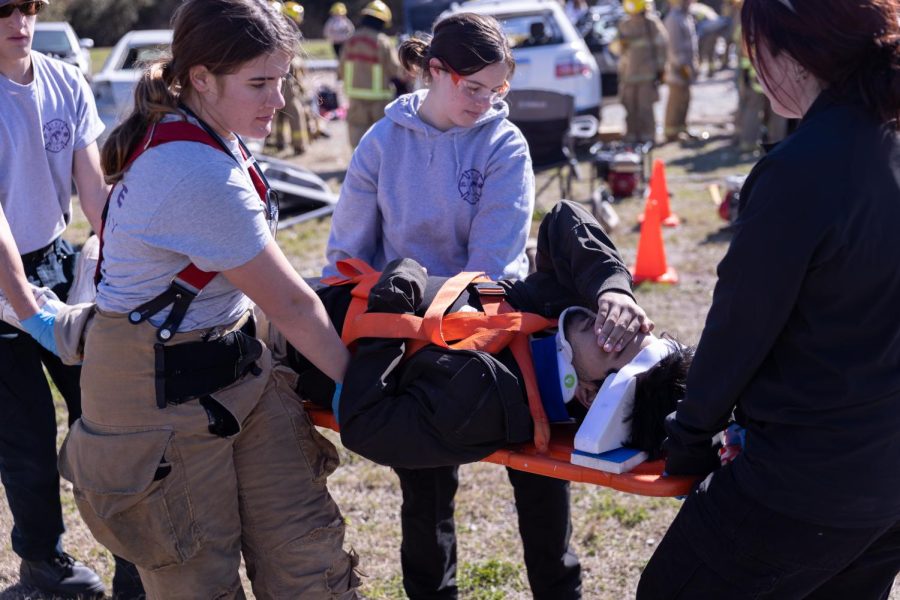
DRIVING THE ENGINE: Fire Academy students practice relocating injured car crash victims. For Kessler, this skill day was not just about trying vehicle extrication for the first time. It was also about getting more comfortable being in a Fire Academy leadership role.
“I’m usually not the one that’s ordering around,” Kessler said. “It was kind of fun to analyze peoples’ strengths and weaknesses and put them in places according to that. Also kind of making people push themselves, it was nice to see progress. I felt kind of responsible for a lot of progress.”
For skill days, Fire Academy juniors are divided into small groups called engines. For the vehicle extrication skill day, Kessler assumed the role of company officer for her engine, one of her first leadership roles during her Fire Academy experience. Being a leader throughout the skill day, Kessler grew closer with her engine.
“I got some people who were a little bit shy when it came to certain aspects like the tools or starting the generator,” Kessler said. “It was nice to see them push themselves and get those skills done that they were kind of shy about.”
Caption by Ingrid Smith. Photo by Gergő Major.

WE DIDN’T START THE FIRE: Under the supervision of professionally trained firefighters, LASA junior Solomon Moon participates in a car extrication exercise. His engine enjoyed using the “Jaws of Life” to dissemble a junkyard Cadillac.
“Using the Jaws of Life was a cool experience because of its raw power and how they can take apart a car with ease using the right technique,” Moon said.
Moon and his engine cut off the roof and doors of the Cadillac in order to rescue a dummy “patient.” Students in the academy learn things in a very hands-on, interactive way, that allows them to collaborate and experiment as they explore different aspects of a firefighter’s job for the first time.
“Having a chain of command system is unique to this job that may not be experienced by high schoolers at this age,” Moon said.
Caption by Maggie Mass. Photo by Gergő Major.





